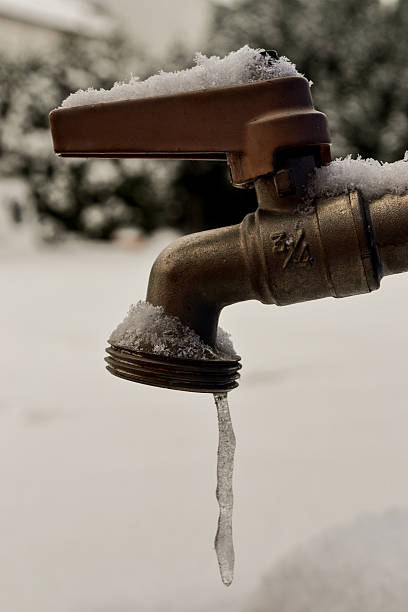Prevent Frozen Pipes in Winter: Pro Tips
Prevent Frozen Pipes in Winter: Pro Tips
Blog Article
In this article further down you can discover some really good guidance on the subject of How to Prevent Your Pipes From Freezing.

Winter can ruin your pipes, specifically by freezing pipes. Below's how to stop it from taking place and what to do if it does.
Intro
As temperatures drop, the threat of icy pipelines increases, possibly causing pricey repair services and water damages. Comprehending how to avoid icy pipelines is essential for property owners in cool environments.
Comprehending Icy Pipelines
What creates pipelines to freeze?
Pipelines ice up when revealed to temperatures listed below 32 ° F (0 ° C) for extended periods. As water inside the pipes ices up, it broadens, taxing the pipe wall surfaces and potentially causing them to break.
Threats and problems
Frozen pipelines can bring about water interruptions, residential property damages, and pricey repair work. Burst pipes can flooding homes and create comprehensive structural damages.
Indications of Frozen Piping
Recognizing icy pipes early can avoid them from bursting.
Exactly how to identify frozen pipelines
Search for reduced water circulation from taps, unusual smells or noises from pipelines, and visible frost on subjected pipelines.
Prevention Tips
Insulating susceptible pipelines
Cover pipes in insulation sleeves or use warm tape to shield them from freezing temperatures. Focus on pipes in unheated or outside areas of the home.
Home heating techniques
Maintain interior spaces adequately warmed, especially areas with plumbing. Open cabinet doors to permit cozy air to flow around pipelines under sinks.
Securing Outside Plumbing
Yard hose pipes and outside taps
Detach and drain pipes garden tubes prior to winter season. Set up frost-proof spigots or cover exterior taps with shielded caps.
What to Do If Your Pipes Freeze
Immediate activities to take
If you believe frozen pipelines, keep taps open up to ease stress as the ice melts. Make use of a hairdryer or towels soaked in warm water to thaw pipes gradually.
Long-Term Solutions
Architectural changes
Think about rerouting pipelines away from exterior walls or unheated areas. Include extra insulation to attic rooms, cellars, and crawl spaces.
Updating insulation
Buy top quality insulation for pipelines, attics, and walls. Proper insulation helps maintain regular temperature levels and minimizes the risk of frozen pipes.
Final thought
Avoiding icy pipelines requires positive steps and quick feedbacks. By understanding the reasons, indications, and safety nets, home owners can safeguard their plumbing throughout cold weather.
5 Ways to Prevent Frozen Pipes
Drain Outdoor Faucets and Disconnect Hoses
First, close the shut-off valve that controls the flow of water in the pipe to your outdoor faucet. Then, head outside to disconnect and drain your hose and open the outdoor faucet to allow the water to completely drain out of the line. Turn off the faucet when done. Finally, head back to the shut-off valve and drain the remaining water inside the pipe into a bucket or container. Additionally, if you have a home irrigation system, you should consider hiring an expert to clear the system of water each year.
Insulate Pipes
One of the best and most cost-effective methods for preventing frozen water pipes is to wrap your pipes with insulation. This is especially important for areas in your home that aren’t exposed to heat, such as an attic. We suggest using foam sleeves, which can typically be found at your local hardware store.
Keep Heat Running at 65
Your pipes are located inside your walls, and the temperature there is much colder than the rest of the house. To prevent your pipes from freezing, The Insurance Information Institute suggests that you keep your home heated to at least 65 degrees, even when traveling. You may want to invest in smart devices that can keep an eye on the temperature in your home while you’re away.
Leave Water Dripping
Moving water — even a small trickle — can prevent ice from forming inside your pipes. When freezing temps are imminent, start a drip of water from all faucets that serve exposed pipes. Leaving a few faucets running will also help relieve pressure inside the pipes and help prevent a rupture if the water inside freezes.
Open Cupboard Doors
Warm your kitchen and bathroom pipes by opening cupboards and vanities. You should also leave your interior doors ajar to help warm air circulate evenly throughout your home.

We were shown that write-up about How to prepare your home plumbing for winter weather from an associate on a different domain. Liked our blog posting? Please quickly share it. Help other people find it. Thank you so much for going through it.
Click Here Report this page